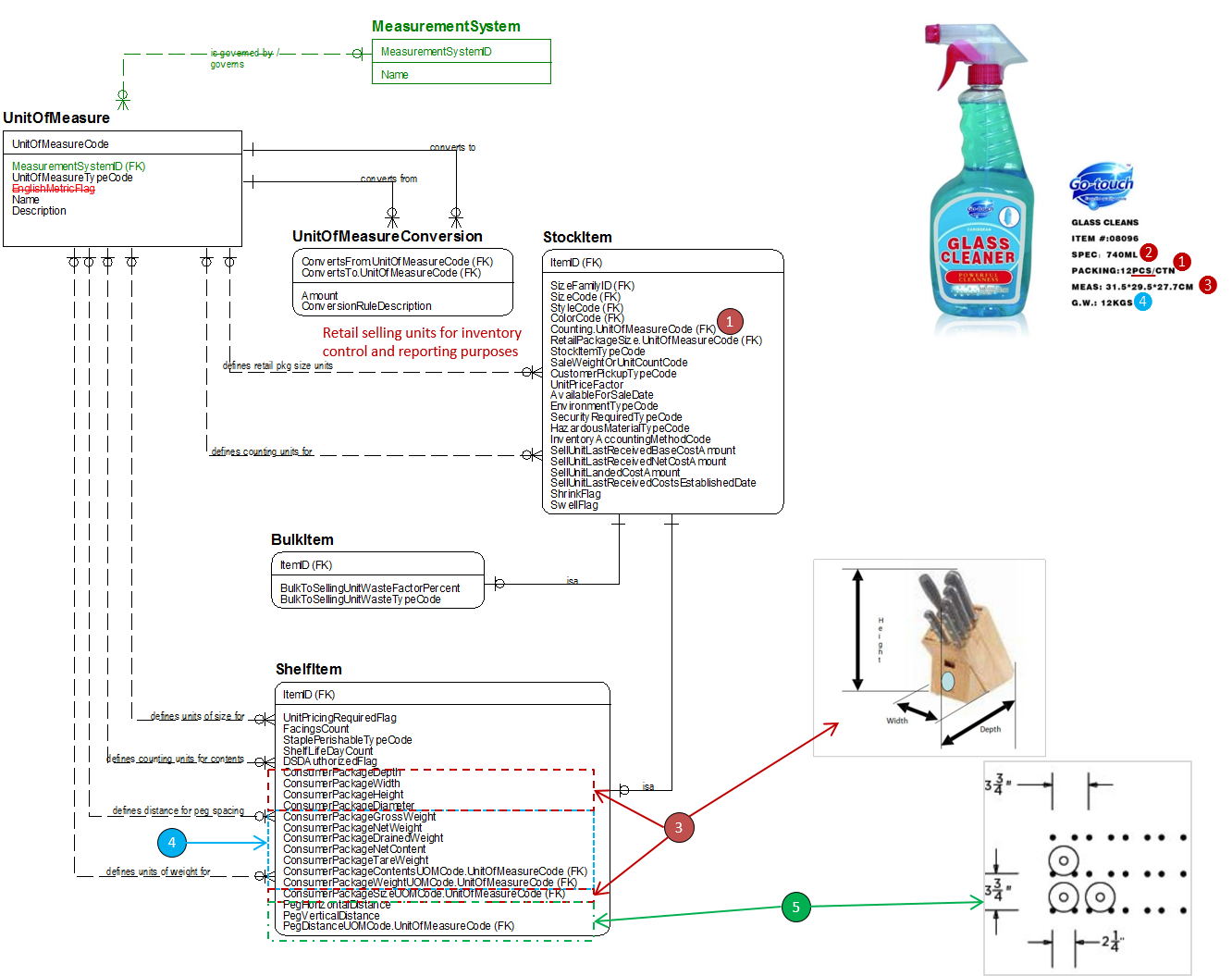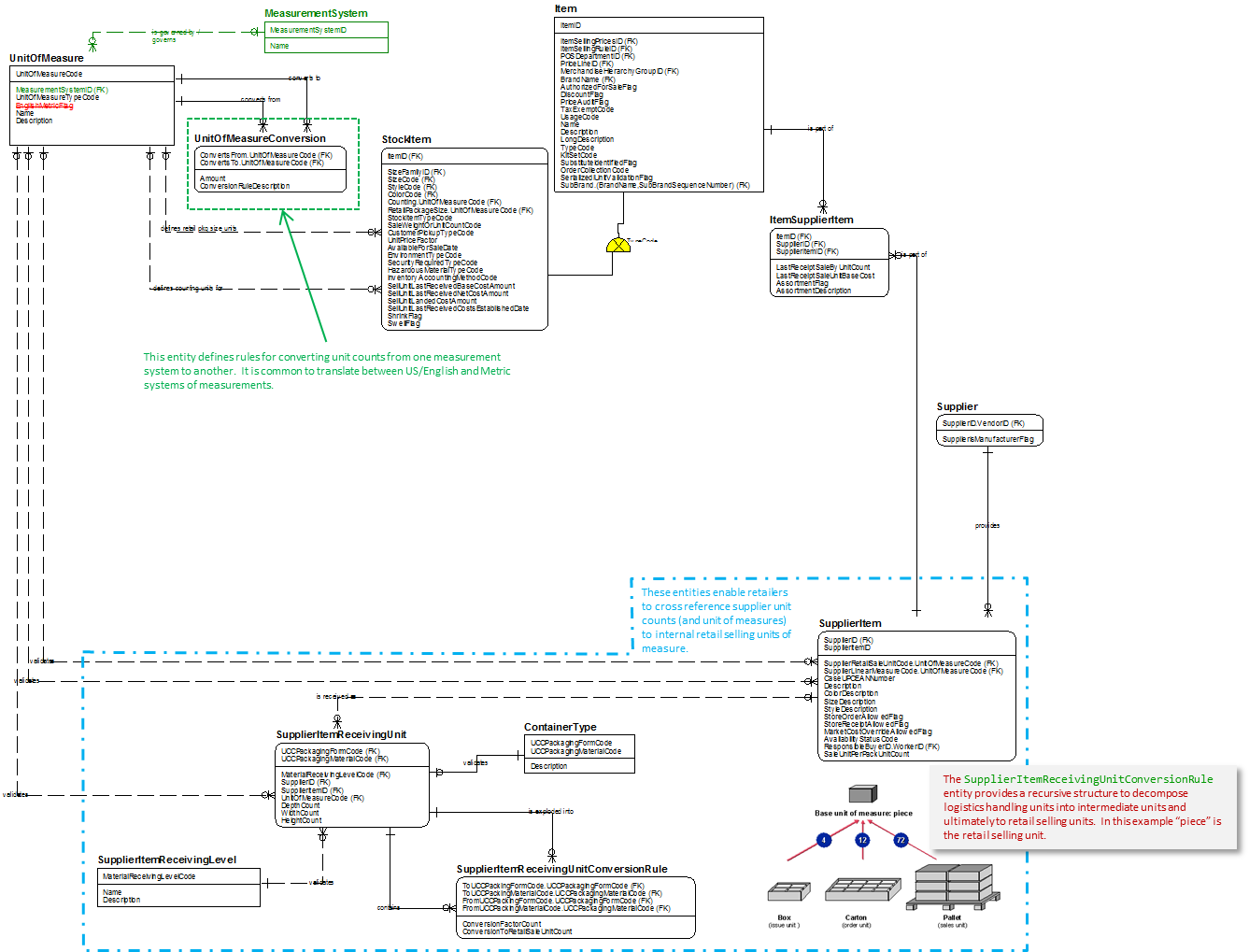Subject Area Concepts The ARTS ODM 7.1 supports a flexible structure for identifying and converting units of measures used to count items for ordering, unit sales reporting, inventory management, returns management and other material handling retail processes. The UnitOfMeasure entity provides a single place where all named counting units are maintained. The UnitOfMeasureCode is the code used to specify the units in which a value is being expressed, or manner in which a measurement has been taken. This code relates to the UCC data element 355. Unit of Measure for Retail Selling Unit Counting and Size DescriptionARTS provides unit of measures used to u count retail selling units for sales reporting and inventory control purposes. Also, unit of measure is used to v identify the weight, liquid volume or other quantitative description of a retail selling unit size. The different uses of UnitOfMeasure are illustrated in the following diagram. Notice that these two retail selling unit unit of measures are carried in the StockItem entity type. Unit of Measure for Shelf Space Management and PlanogramsThere is a second use for unit of measure. It deals with specifying how shelf retail selling units are measured for the purpose of space planning. Cubic measures based on a three dimensional box define how much shelf space a retail selling unit requires for display. These unit of measure references are carried in the ShelfItem entity as foreign keys. The w quantities and related unit of measure define the cubic shelf space required for each retail selling unit. In addition to the cubic measures, the ShelfItem entity has x weight unit of measure references and quantities. These enable a retailer to distinguish product weight from packaging weight in a flexible way that addresses a number of different packaging scenarios. In addition to the retail package size, the ShelfItem entity also provides y peg horizontal and vertical distance space requirements for hanging display items. Figure 78 - Retail Selling Unit of Measure Illustration
Translation From Retail Selling Unit to Supplier Receiving UnitThe ARTS ODM V7.1 features a generalized data structure to handle a multi-level translation between retail selling units and supplier receiving units as illustrated in the following diagram. Retailers may introduce as many levels as required to support their material handling and inventory control requirements. Also, suppliers may have their own catalog units that are different from the retailers selling units. In addition to discrete retail selling units (e.g. pieces or each unit of measures) merchandise may also be sold in bulk. BultItem merchandise is priced and sold by unit of measure such as pounds, kilograms, liters, gallons, etc. Gasoline, fresh ground coffee, deli items, etc. are typically sold by a unit of measure where each individual purchase is composed of variable unit counts. Bulk item unit of measures are typically consistent for retail selling units and supplier receiving units. Conversion Between Different Measurement SystemsThe UnitOfMeasureConversion entity provides the rules used to convert between different measurement systems. European manufacturers that specify retail selling units using the metric system will translate those units into the US Imperial measurement system. Figure 79 - Supplier Receiving Unit - Retail Selling Unit Entities
As illustrated here, ARTS provides a flexible mechanism to address retail inventory and sales unit of measures. The logic to perform the mapping and conversion is implemented as part of the retailer's application system. |

